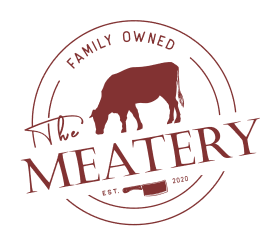What makes Japanese A5 Wagyu so expensive?
Japanese A5 Wagyu stands as the pinnacle of luxury beef, commanding prices that can exceed $200 per pound. This extraordinary cost stems from a combination of unique factors that make this beef variety truly exceptional. At its core, the price reflects the intensive care and meticulous production methods required to raise authentic Japanese A5 Wagyu cattle.
The primary factor driving the cost is the extensive care each animal receives. Japanese Wagyu cattle are treated with extraordinary attention, often receiving daily massages, specialized feed mixtures, and even beer to stimulate appetite. Japanese Wagyu These practices, while seemingly extravagant, contribute to the development of the beef's characteristic marbling – the intricate networks of intramuscular fat that create its legendary texture and flavor.
Additionally, the genetics of Japanese A5 Wagyu are strictly controlled. The Japanese government maintains detailed bloodline records and regulates breeding programs to ensure genetic purity. This genetic exclusivity, combined with the limited number of cattle that meet A5 classification standards, creates a natural scarcity that drives up prices.
The grading process itself contributes to the cost. To achieve A5 status, the beef must score between 8-12 on every quality criterion, including marbling, color, texture, and fat quality. Only a small percentage of Japanese Wagyu achieves this prestigious grade, making it exceptionally rare and valuable.
Farm-to-table: The Story of A5 Wagyu
The journey of Japanese A5 Wagyu from farm to table is a testament to Japanese dedication to excellence. Each animal's life story begins with careful genetic selection, drawing from bloodlines that have been refined over generations. The cattle are raised in small-scale operations where farmers maintain traditional methods passed down through families.
These cattle experience a level of care that might seem excessive to outsiders. Their daily routine includes regular exercise to promote proper fat distribution, controlled feeding schedules, and stress-free environments. Farmers often know each animal individually, monitoring their health and development with extraordinary attention to detail.
The feed program is precisely calculated, consisting of high-quality grains, grasses, and often supplemented with local ingredients like sake mash or special grain combinations. This diet, combined with the peaceful environment, contributes to the development of the beef's characteristic marbling over a period of 2-3 years.
Once the cattle reach maturity, they are processed in certified facilities under strict guidelines. Each carcass is meticulously evaluated by trained graders who assess multiple quality factors. Only after passing this rigorous inspection can the beef be certified as A5 grade and prepared for distribution to high-end restaurants and specialty butchers.
The Cultural Significance of Japanese Wagyu
In Japanese culture, Wagyu represents far more than just premium beef – it embodies the nation's commitment to perfection and attention to detail. Historically, cattle in Japan were primarily used as draft animals, and the careful breeding that led to today's Wagyu began as an effort to develop stronger working animals. This utilitarian beginning evolved into an art form of beef production.
The cultural importance of Wagyu is reflected in how it's regulated and protected. The Japanese government considers Wagyu cattle a national treasure and strictly controls their genetics and export. This protection extends to the point where the export of live Wagyu cattle was banned for many years to preserve the purity and quality of the breed.
In Japanese dining culture, Wagyu is often served in small portions, reflecting the Japanese principle of quality over quantity. Traditional preparation methods emphasize the beef's natural flavors, often using minimal seasoning to allow the meat's inherent qualities to shine. This approach aligns with the Japanese aesthetic principle of shibui – simple, subtle, and unobtrusive beauty.
The respect for Wagyu extends to the farming communities where it's raised, where producers are often viewed as artisans rather than just farmers. Their dedication to maintaining traditional methods while incorporating modern scientific understanding represents a uniquely Japanese balance of tradition and innovation.
Japanese Origin And Grading
The Japanese grading system for Wagyu is arguably the most sophisticated beef quality assessment system in the world. The A5 designation represents the highest possible grade, where 'A' refers to yield grade (how much usable meat is on the carcass), and '5' denotes the highest quality grade based on multiple factors.
To achieve A5 classification, beef must excel in several categories:
- Marbling Score (BMS): Must be 8-12 on the Japanese scale
- Meat Color: Bright red with perfect consistency
- Fat Color: Pure white to slightly yellow
- Firmness and Texture: Must meet exacting standards
- Overall Quality: Superior in all aspects
The Japanese origin is crucial because only cattle raised according to strict Japanese regulations and graded by certified Japanese graders can receive this classification. This system ensures that authentic Japanese A5 Wagyu maintains consistent quality standards that set it apart from Wagyu-style beef produced in other countries.
Is A5 Wagyu or Kobe better?
The comparison between A5 Wagyu and Kobe beef often creates confusion, as Kobe is actually a specific type of Japanese A5 Wagyu. All Kobe beef is A5 Wagyu, but not all A5 Wagyu is Kobe beef. Kobe beef comes exclusively from Tajima-gyu cattle raised in Hyogo Prefecture according to strict regulations.
Both A5 Wagyu and Kobe beef represent the pinnacle of beef quality, but they differ in several ways:
- Kobe beef must come from specific bloodlines and be raised in a specific region
- A5 Wagyu can come from any Japanese prefecture, provided it meets quality standards
- Kobe beef has additional certification requirements beyond the A5 grade
Neither is necessarily "better" than the other; they simply represent different aspects of premium Japanese beef. While Kobe beef is often considered the most famous, other regional A5 Wagyu varieties like Matsusaka, Ohmi, and Sanuki olive beef are equally prestigious and may offer unique flavor profiles based on their specific raising methods and regional characteristics.
Comparative Analysis
When comparing Japanese A5 Wagyu to other premium beef varieties, several distinct characteristics become apparent. The most notable difference lies in the intensity and quality of marbling. While USDA Prime beef typically has a marbling score of 4-5, A5 Wagyu consistently scores 8-12 on the Japanese scale.
Key differences include:
- Fat Composition: A5 Wagyu contains a higher percentage of monounsaturated fats and omega-3 fatty acids
- Texture: The fat in A5 Wagyu has a significantly lower melting point, creating its signature "melt-in-your-mouth" experience
- Flavor Profile: More complex umami flavors compared to other beef varieties
- Price Point: Significantly higher cost due to production methods and scarcity
When compared to American Wagyu or Australian Wagyu, Japanese A5 Wagyu typically shows more consistent marbling patterns and a more refined flavor profile, reflecting the stricter production standards and pure bloodlines maintained in Japan. This comparison helps explain why Japanese A5 Wagyu remains the gold standard in premium beef worldwide!









